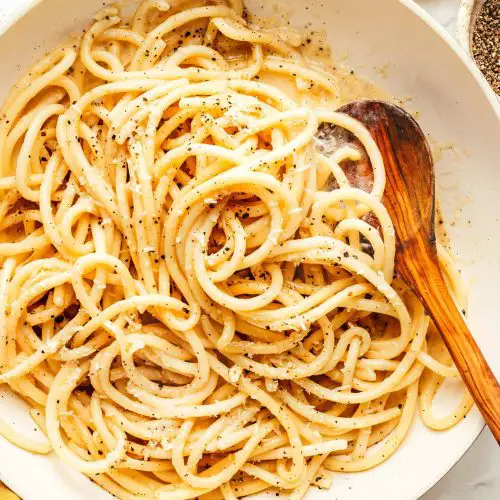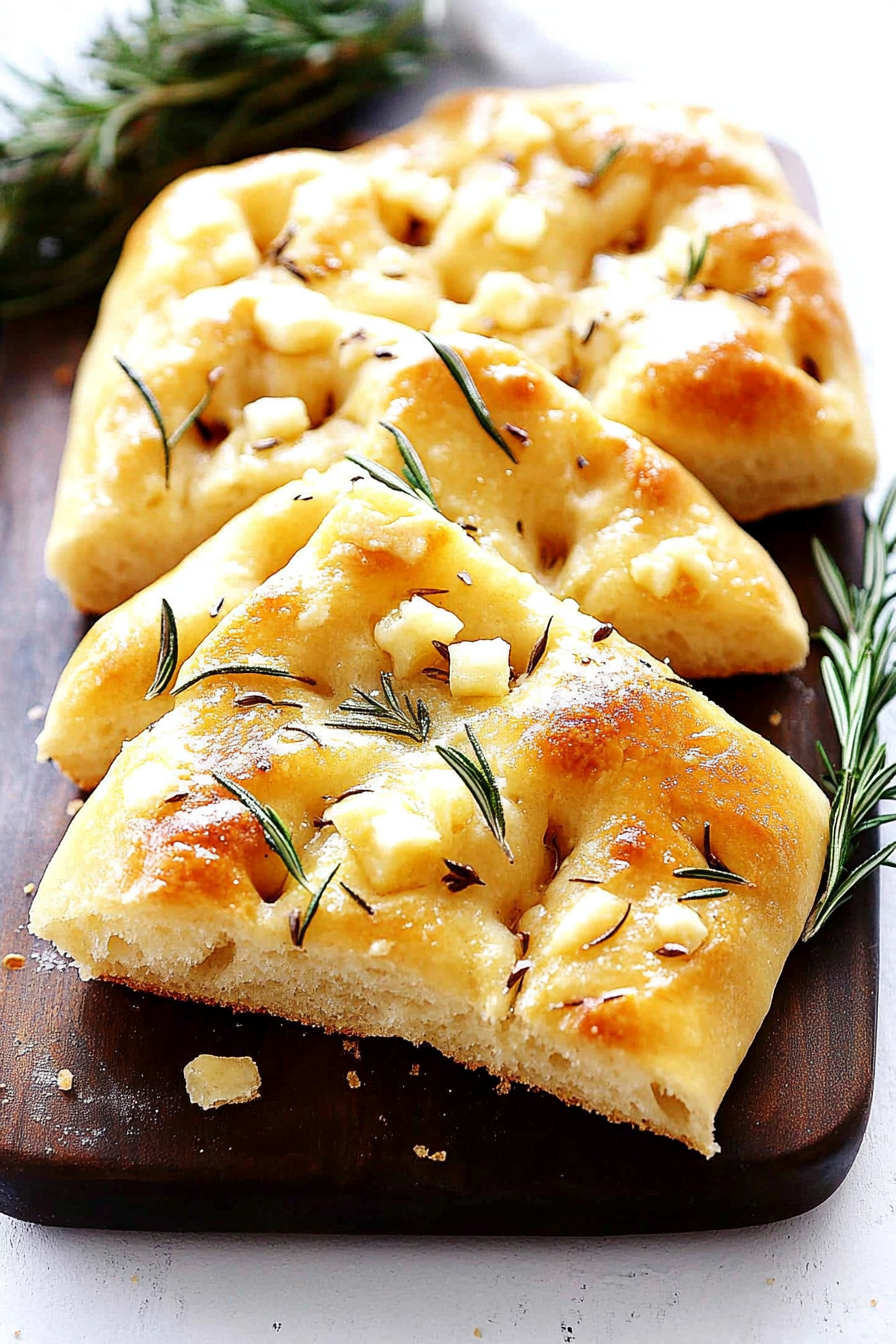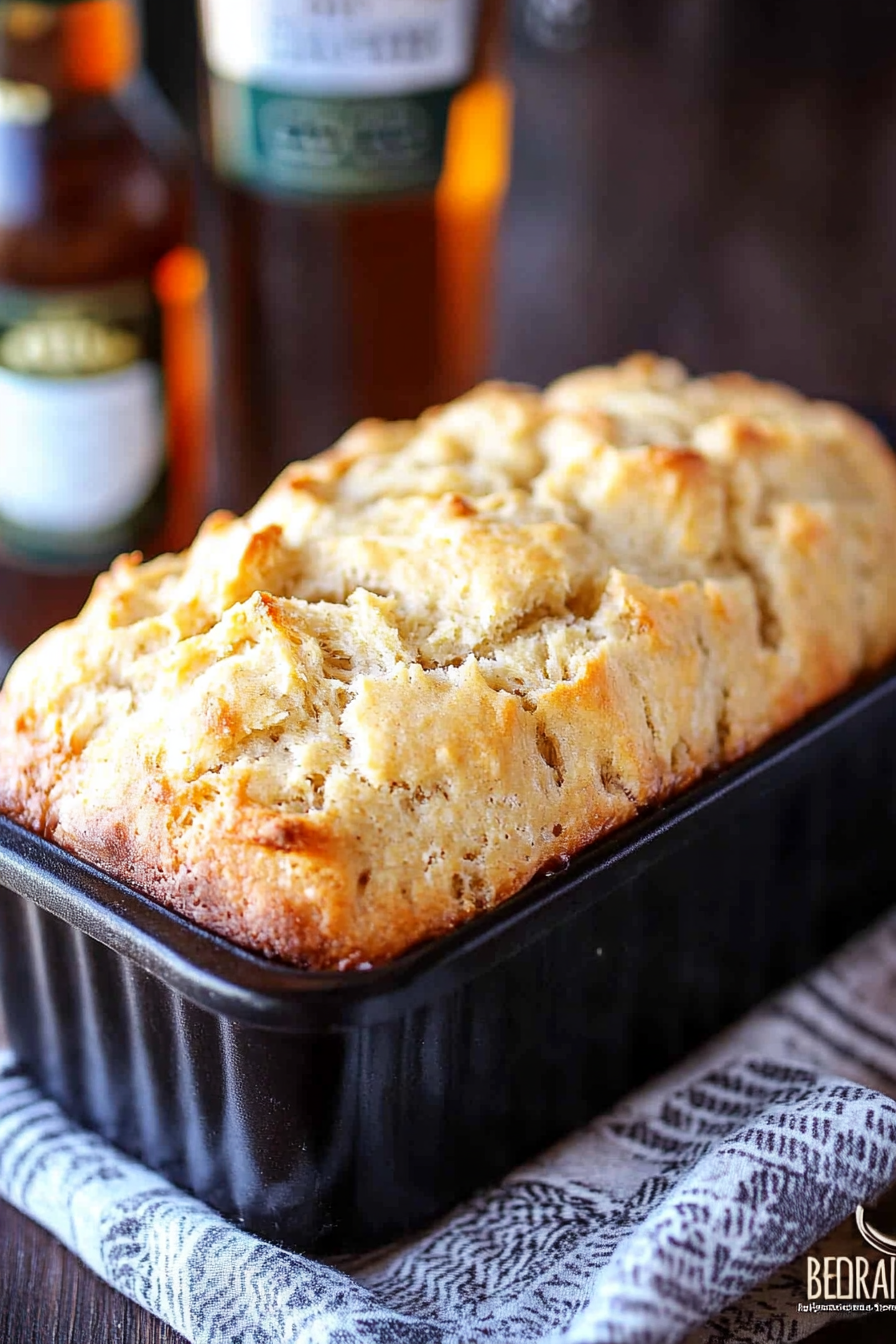There’s something almost magical about Cacio e Pepe. I’ll never forget the first time I tasted a plate that seemed to whisper, “simple is its own kind of luxury.” The aroma hit me before the plate did—a swirl of freshly cracked pepper, a hiss of melting cheese, and pasta that glowed with glossy silk. It’s not flashy, it’s not fussy, and yet it feels like a warm hug from a grandmother who knew exactly how to coax every ounce of flavor from a handful of pantry staples. I grew up watching my aunt in a cramped Roman apartment, a pot of starchy water singing on the stove, a wedge of Pecorino Romano waiting at the edge of the counter, and Black Pepper ground with a movie-star smile. Cacio e Pepe is the kind of dish that travels well—from a busy weeknight to a Sunday family table—because it’s incredibly flavorful, incredibly quick, and endlessly adaptable. This one’s a lifesaver on busy nights, and trust me, the crowd goes wild for it. I love how it feels like a secret you share with anyone who sits down to eat with you, the way the steam fogs a kitchen window and the first bite makes you lean back with a contented sigh. If you’ve got five ingredients and eighteen minutes, you’ve got dinner that tastes like a small victory. And if you’ve never made it before, you’ll be surprised how forgiving it is once you understand the rhythm—all you need is hot pasta water, cheese, pepper, and a little patience as you emulsify until it’s gloriously creamy. It’s not just pasta; it’s a memory you can carry to the table every night.
What is Cacio e Pepe?
Cacio e Pepe translates to cheese and pepper, and that’s basically the entire concept in one elegant, user-friendly idea. Think of it as the Roman cousin to a classic Alfredo, but with Pecorino Romano standing proudly in for most of the cream and a bold fistful of cracked black pepper doing the talking. It’s essentially pasta tossed with a hot, glossy emulsion of cheese and starchy pasta water, with pepper acting as both heat and aroma. The trick lies in how you marry the cheese with the water so it becomes a silky sauce rather than clumpy cheese curds. My favorite part is how it showcases a handful of pantry staples—quality cheese, good pasta, and a jar of black pepper—and somehow ends up tasting restaurant-level in your own kitchen. The name itself makes you smile: something so uncomplicated that it feels almost mischievous in its simplicity. This dish is a love letter to the Romans’ “cucina povera” ethos—humble ingredients, extraordinary results, and the confidence to trust your senses over a long list of steps. When people ask me for a “weeknight pasta,” this is usually what I recommend first, because there’s a high chance it will become your fallback, too.
Why you
What I love most about Cacio e Pepe is the way it rewards attention to a few small details. It’s a dish that tastes decadent and luxurious, but it’s built from budget-friendly staples that you can keep on hand. Here’s why this version stands out:
- Flavor: The pepper’s heat and the cheese’s bite create a bright, toasty, almost nutty aroma
- SimplicityWhat are some of the best pantry staples to make this recipe?
- Cost-efficiency: Pecorino Romano is a pantry powerhouse here, and a little goes a long way. The cheese melts beautifully with the pasta water, so you don’t need heavy cream or extra fats to achieve that luscious texture.
- Versatility: It’s easy to tailor the heat level with pepper, adjust the salt with the cheese’s saltiness, and even play with texture by choosing different pasta shapes. It also plays nicely with add-ins like a quick sautéed zucchini, a splash of lemon zest, or a handful of parsley for color and freshness.
- Personal touch: I’ve made this countless times and it never fails. My kids actually ask for seconds, and I’ve learned the trick of rescues—if the sauce looks a touch grainy, a splash more hot water and a quick toss fixes it in seconds.
For me, the beauty of this dish is how it invites you to be present in the moment: to taste the pepper, to watch the cheese melt into a satin sheen, and to feel that early-evening calm settle over the kitchen as the pasta finishes. It’s simple, but the sensory experience is anything but ordinary.
How to Make Cacio e Pepe
Quick Overview
This is a small, focused ritual: boil your pasta until al dente, grate a generous amount of Pecorino Romano, crack a lot of black pepper, and then bring everything together with hot starchy water. The key is to emulsify the cheese with the water off the heat, so you don’t curdle the cheese. You want a glossy, creamy sauce that clings to each strand of pasta, never a pool of sauce sitting at the bottom of the bowl. It’s a fast, hands-on process, but it’s also incredibly forgiving if you stay close to the heat and keep stirring. If you’ve got a moment, toast the pepper a little in a dry skillet to awaken its oils and aroma—this small step makes a big difference in the final flavor. And yes, you can absolutely add a squeeze of lemon, a few capers, or a handful of chopped parsley to brighten things up, but I usually keep it simple right here to let the cheese and pepper shine.
Ingredients
For the Pasta & Cheese:
– 12-14 oz (340-400 g) pasta, preferably tonnarelli or spaghetti, or bucatini if that’s what you have on hand
– 1 cup finely grated Pecorino Romano
– 1/2 cup finely grated Parmigiano Reggiano (optional for a touch of mellowness)
– 1 1/2 to 2 cups reserved hot pasta water (from the same pot you cook the pasta)
– 2-3 tsp freshly ground black pepper (adjust to heat preference)
– Salt, to taste (remember the cheese is salty, so go easy)
For the Pepper Emulsion:
– Extra cracked pepper for finishing, to taste
– A small splash of the reserved pasta water if needed to loosen the sauce
For the Finishing Touch:
– A drizzle of high-quality extra-virgin olive oil, optional
– Fresh parsley or lemon zest for brightness, optional
Step-by-Step Instructions
Step 1: Preheat & Prep Pan
Fill a large pot with water, salt it generously, and set it to boil. While the water comes to a rolling boil, warm a wide, shallow pan over low heat. This helps the cheese emulsify smoothly later and keeps everything moving without sticking. I always do this when I’m aiming for that silky sauce because a hot pan is essential for the cheese to melt evenly without clumping.
Step 2: Mix Dry Ingredients
Grind the pepper coarsely in a mill, and measure out your cheeses. The texture of the pepper matters; a coarse grind releases a fragrance that’s more pronounced with heat. I like to toast the pepper in the dry pan for 20-30 seconds to wake up the oils, then remove from heat so it doesn’t burn. The goal is aromatic heat, not bitterness.
Step 3: Mix Wet Ingredients
When the pasta water is roaring, add the pasta. As it cooks, whisk together the Pecorino Romano (and Parmigiano if using) in a small bowl with a ladle of hot water from the pot. This pre-emulsification step helps the cheese melt smoothly later and reduces the risk of clumping when you combine everything with the pasta.
Step 4: Combine
Reserve 1 1/2 to 2 cups of the pasta water before draining. Return the drained pasta to the pot or transfer to the warm pan. Add the hot water gradually, then sprinkle in the cheese while you toss with tongs. The mixture will seize at first, but keep tossing vigorously over low heat. The goal is a glossy, cohesive sauce that blankets every strand. If you see it getting too thick, add a splash more water; if it’s too thin, a little more cheese can thicken it up.
Step 5: Prepare Filling
This is where the cheese really shines. Stir the emulsion of cheese and water into the pasta until the sauce clings and gleams. You’re aiming for a satin-like consistency that coats the noodles without pooling. Taste and adjust salt if needed; remember, Pecorino Romano brings more bite than Parmesan, so you may not need much extra salt. If the sauce tightens up too quickly, loosen with a bit more hot water from the pot.
Step 6: Layer & Swirl
Swirl in a steady, confident motion so the sauce distributes evenly. You’ll notice the starches help to emulsify the cheese into a creamy coat. A few quick turns around the pan to lift the noodles and press them against the sauce ensures you’ve got a smooth, even coating rather than a curtain of sauce at the edges. This is the moment where you decide if you want a stronger pepper kick or a more delicate warmth—adjust accordingly and keep the motion steady.
Step 7: Bake
We’re not actually baking here, but this step mirrors the same principle: gentle heat and steady movement until you achieve a harmonious emulsification. Keep the heat low, and give the pasta a few more tosses to ensure every noodle gleams. If your kitchen is particularly cool, you can briefly return the pan to a very low flame to coax out a final gloss, but watch closely so nothing scorches or separates.
Step 8: Cool & Glaze
Remove from heat and finish with a final gloss of the sauce. A tiny drizzle of olive oil can elevate the finish if you’re serving guests who appreciate a luxe sheen. If you like a bright note, grate a tiny bit of lemon zest over the top or sprinkle with chopped parsley. I’ll often finish with a last crack of black pepper just before plating to brighten the aroma as the plates land on the table.
Step 9: Slice & Serve
Plate the glossy strands proudly, perhaps with a little more cheese shaved on top. The dish is best served immediately while the sauce is still silky and the pepper aroma is fresh. If you’re plating for a crowd, keep the sauce warm and whisk through with a splash of hot water just before serving to maintain that satin texture. A light salad on the side or a simple apartment-style bruschetta makes a perfect accompaniment, but this pasta stands beautifully on its own too.
What to Serve It With
This is a dish that loves to be the star, but it also pairs nicely with a few thoughtful accompaniments. Here are ideas organized by occasion to help you plan a memorable meal:
For Breakfast: If you’re a breakfast-for-dinner kind of household, serve a runny-poached egg on top of a small portion of Cacio e Pepe, letting the yolk mingle with the warm cheese. A side of sautéed greens and a slice of crusty bread turns it into a hearty morning feast that feels indulgent without being heavy. My family loves this with a cup of strong coffee and a little extra pepper to wake us up.
For Brunch: A bright, lemony salad (arugula, shaved fennel, and a tangy vinaigrette) provides a crisp counterpoint to the creamy pasta. Add a few marinated artichokes or olives for a Mediterranean vibe. I adore serving this with a crisp Prosecco cocktail or a light sparkling water with citrus; it feels like a celebratory brunch without losing the comfort-factor.
As Dessert: Cacio e Pepe isn’t dessert material, but you can create a playful contrast by finishing the meal with a small, airy lemon sorbet or a ricotta-based dessert with honey and pistachios. The idea is to let the savory notes stand tall and give your palate a refreshing finish after the pasta. If you’re cooking for kids, a small bowl of vanilla yogurt with a touch of honey and orange zest mirrors the lemony brightness you’d get in a dessert course, clean and refreshing after a cheese-forward main.
For Cozy Snacks: Leftover Cacio e Pepe makes a dreamy snack warmed through with a splash of hot water and a quick toss in a skillet. It’s perfect for movie nights or late study sessions when you want something comforting but not heavy. If you have a few slices of garlic bread on hand, you can brush them lightly with olive oil and toast until crisp for dipping and texture contrast—this is my kids’ favorite pairing on casual evenings.
Top Tips for Perfecting Your Cacio e Pepe
These little tricks have saved me countless times and they’re the reason this dish can move from good to unforgettable in minutes.
Cheese Prep: Use Parmigiano-Reggiano in combination with Pecorino Romano, or just Pecorino if you prefer a sharper bite. Grate cheese finely so it melts quickly and evenly. I stash a small block of Pecorino in the fridge and grate just before cooking to keep the flavor bright and lively.
Pepper Prep: Freshly cracked pepper is non-negotiable. Toast the pepper lightly in a dry skillet for a few seconds to release its oils, then grind. This is the moment when you’ll notice the aroma shift from raw to toasted warmth—don’t skip it.
Emulsification: The secret to a silky sauce is adding cheese with hot water off the heat. Start with a small amount of water, whisk into the cheese to form a smooth paste, then add the rest of the water gradually while tossing the pasta. If it clamps up, add more hot water a little at a time until the sauce flows like satin.
Texture & Sauce Management: The sauce should cling to each noodle, not pool on the plate. If it’s too thick, splash in more water; if it’s too thin, grate a little more cheese or lower the heat and give it a few extra tosses. The emulsification happens quickly, so stay close to the pan and keep things moving.
Ingredient Swaps: You can experiment with pasta shapes—spaghetti gives a classic long-ssu experience, while tonnarelli or bucatini offer a touch more chew and surface area for the sauce. For a dairy-free version, whisked cashew cheese can be folded in with warm water, but the flavor will shift and you’ll miss that quintessential tang of Pecorino.
Serving & Presentation: A quick finish with parsley, lemon zest, or a drizzle of olive oil can elevate the dish’s brightness. I love finishing with a few shards of extra cheese and a final crack of pepper just as the plate lands on the table—the aroma alone gets everyone at the table excited.
Storing and Reheating Tips
You’ll find this to be one of those dishes that tastes best when fresh, yet it stores surprisingly well if you handle it right. Here’s how I manage leftovers and still keep that signature creaminess.
Room Temperature: If you’ve got leftovers sitting on the counter, don’t leave them out for more than two hours. Cacio e Pepe doesn’t love sitting around; it’s best enjoyed warm or properly refrigerated soon after cooking.
Refrigerator Storage: Transfer cooled pasta to an airtight container. It will keep for up to 2 days. Pour a teaspoon of olive oil or a splash of water over the leftovers before sealing; this helps prevent the pasta from drying out and sticking together.
Freezer Instructions: Freezing pasta with cheese isn’t ideal; it can separate upon thawing. If you must freeze, store the plain pasta (no cheese) separately and reheat with a fresh cheese emulsion when you’re ready to serve. Expect a slight textural difference, but the flavor remains pleasing.
Glaze Timing Advice: If you’re reheating, stir in hot water or a splash of stock to help recreate the emulsified texture. Avoid microwaving straight from the fridge for too long—gentle reheating on the stove yields a silkier sauce and a more even temperature throughout the dish.
Overall, the best strategy is to cook just-enough pasta for the meal, then set aside a bit of the cooking water for a quick rescue if you’re planning to reheat later. The starch in that water is your best friend for reviving the sauce.
Frequently Asked Questions
Final Thoughts
Cacio e Pepe is the kind of recipe that makes you believe in the magic of simple ingredients. It’s one of those dishes I keep coming back to when life feels chaotic because it’s quick, reliable, and deeply satisfying. The cheese’s tang, the pepper’s heat, and the way the pasta drinks up every drop of sauce—it’s a reminder that genius often hides in the smallest details. I hope you try this soon and make it your own: toast the pepper a touch longer if you like a stronger kick, or fold in a little parsley for color and freshness. If you end up adding a twist or two, I’d love to hear about it. Happy cooking, and may your kitchen fill with the warm, comforting aroma of pepper and cheese melting into silky pasta. Can’t wait to hear how yours turns out!

Cacio e Pepe
Ingredients
Main Ingredients
- 0.5 pound Spaghetti
- 1.5 cup Pecorino Romano cheese finely grated
- 1 tablespoon Black pepper freshly ground
- 0.25 teaspoon Salt
Instructions
Preparation Steps
- Bring a large pot of salted water to a boil. Add the spaghetti and cook according to package directions until al dente.
- While the pasta is cooking, combine the grated Pecorino Romano cheese and freshly ground black pepper in a medium bowl. Gradually whisk in about 0.5 cup of the starchy pasta water to create a thick paste.
- Reserve about 1 cup of the pasta water before draining the spaghetti. Drain the spaghetti and immediately add it to the bowl with the cheese and pepper mixture.
- Toss the pasta vigorously with the cheese mixture, adding more pasta water a tablespoon at a time as needed to create a creamy sauce that coats the noodles. The heat from the pasta will melt the cheese and emulsify the sauce.
- Serve immediately, topped with extra Pecorino Romano cheese and black pepper if desired.
Notes
Featured Comments
“Impressed! Clear steps and turned out amazing results. Perfect for busy nights.”
“New favorite here — creamy. crowd-pleaser was spot on.”
“Super easy and turned out amazing! My family asked for seconds. Saving this one.”
“This sweet treat was absolutely loved — the balanced really stands out. Thanks!”
“Made it tonight and wow — turned out amazing! Will definitely make Cacio e Pepe again.”
“Packed with flavor and so simple. Exactly what I wanted from Cacio e Pepe.”












